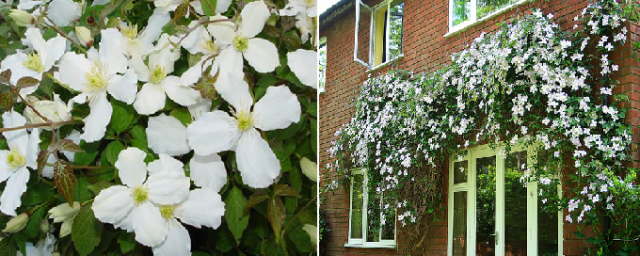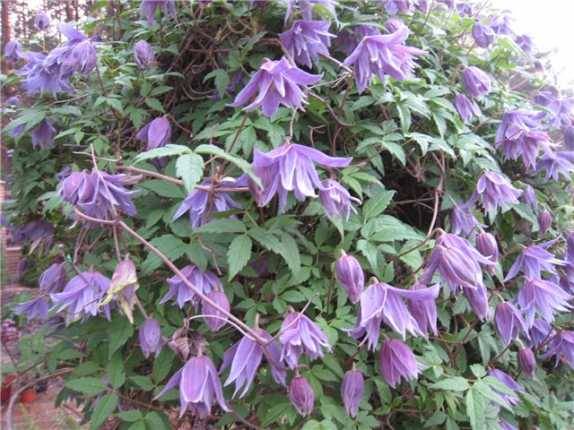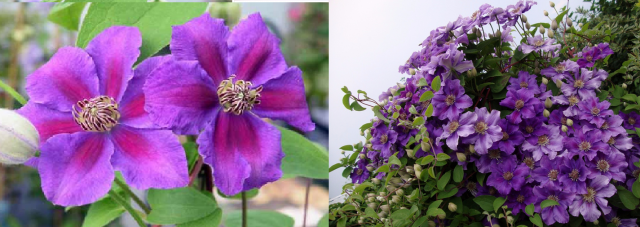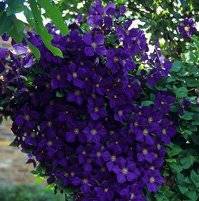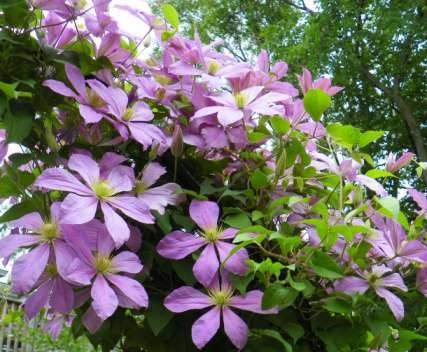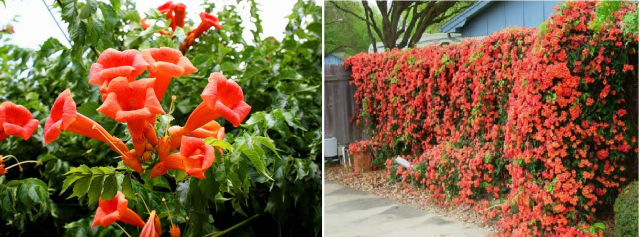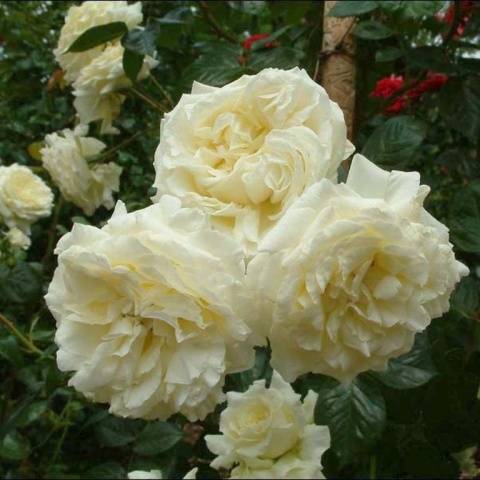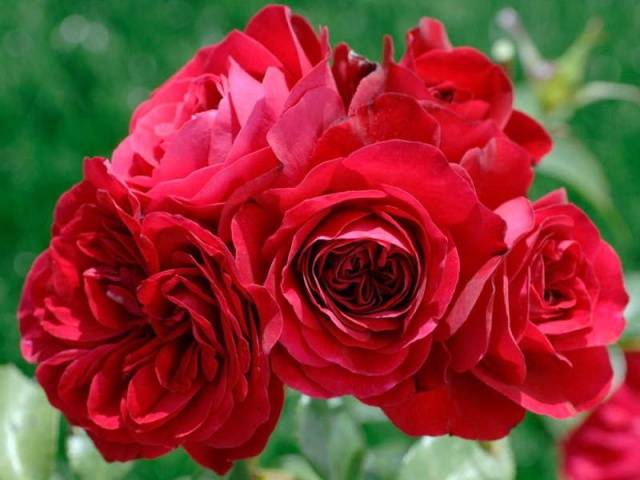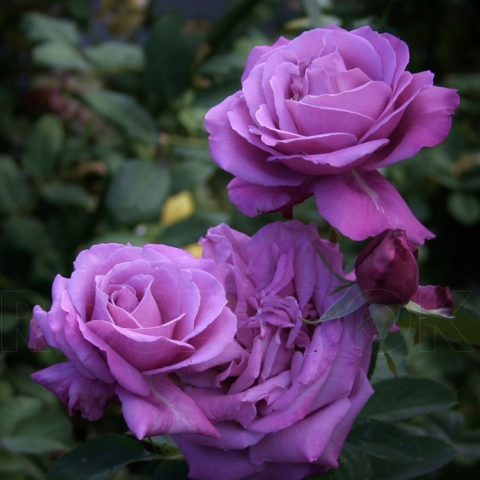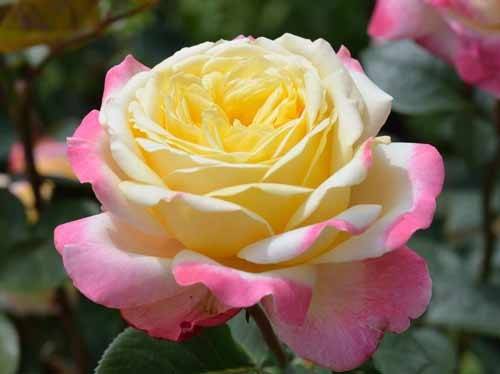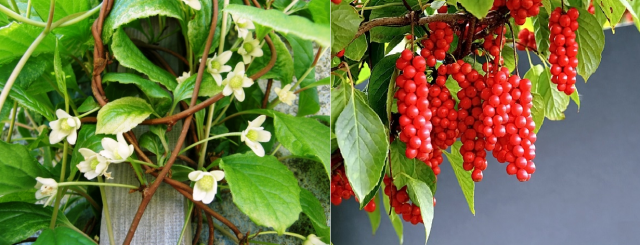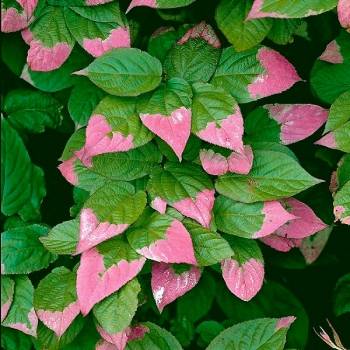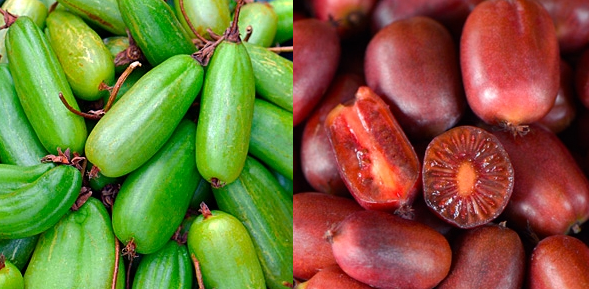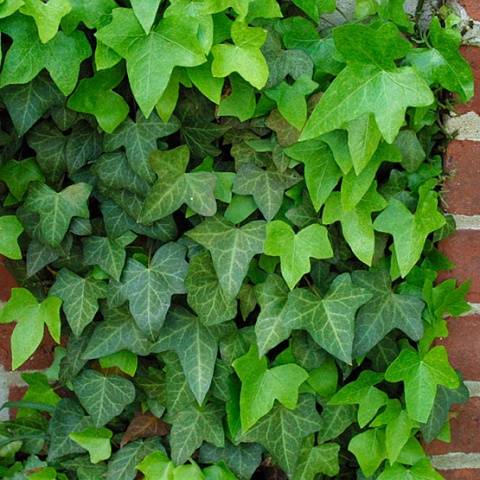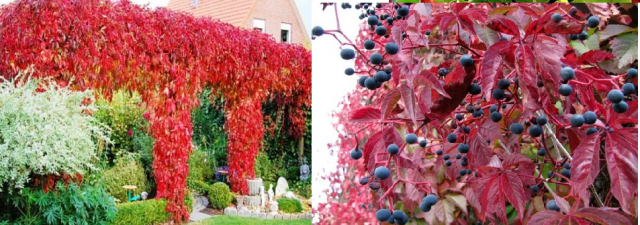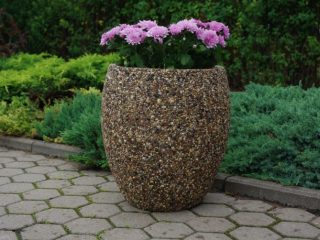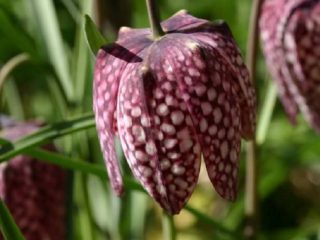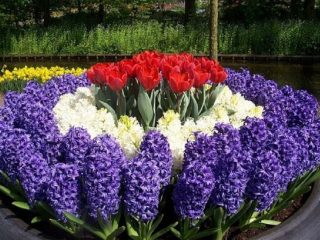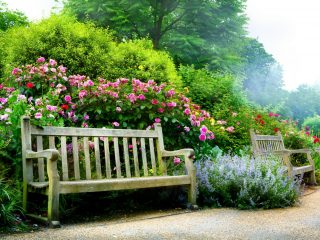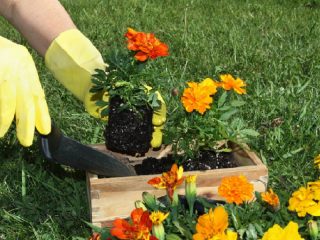Content
Climbing plants occupy a special place in landscape design. With their help, you can conditionally divide a site into zones, create a green fence, hide unsightly walls of outbuildings, or decorate the facades of houses. There are a huge number of evergreen and flowering climbing plants. Of their wide variety, curly ones should be highlighted perennials, which do not need to be planted annually. They do not require much time and effort from the grower, and have increased resistance to diseases and adverse weather conditions. The most popular types and varieties of such plants, their photos and descriptions are given below.
Blooming perennials
Blooming perennials can become a real decoration of the garden. They can be used, among other things, for landscaping flower beds and decorating vertical surfaces. Plants need to be given the desired shape using specially installed supports or garters of vines. A fence, a building wall or, for example, a tree can also serve as a natural support.
Among the flowering climbing plants for the garden, it is worth highlighting clematis, campsis and climbing plants. roses. These plants are the most popular.They are unpretentious to grow, have high frost resistance and can delight with their beauty for many years. The names of varieties, photographs of these plants and basic growing rules are given below.
Clematis
These excellent plants are designed to surprise with their beauty. Their advantages are:
- excellent survival rate;
- abundant, long-lasting flowering from June to October;
- unpretentiousness to growing conditions;
- a wide variety of varieties, with different flower colors.
When choosing a clematis variety, you should pay attention to the root system of the plants: it can be taproot or rhizomatous. Also, depending on the variety, flowers can form on last year's shoots, shoots of the current season, or simultaneously on fresh and old vines.
Montana
This variety of clematis is the most popular. Clematis "Montana" is called mountain. It is characterized by particularly high frost resistance, excellent for temperate climates and the northern regions of Russia. Its flowers form on last year's vines, so the plants do not need to be pruned annually, making maintenance easier.
Clematis "Montana" flowers are large. Their color is white or pale pink. The diameter of simple inflorescences is 5-6.5 cm. You can see the perennial, climbing clematis of the Montana variety in the photo below.
Atragena
The Atragena variety has similar agrotechnical characteristics to the Montana variety. This plant also forms flowers on the shoots of previous years and only needs health-improving pruning, which should be done once every 3-4 years. The height of the vines of the Atragena variety reaches 2-2.5 m. The flower has the shape of a drooping, double bell, with a diameter of 5-6 cm.
Ashwa
This wonderful perennial variety produces flowers profusely on new and last year's shoots. Every year, in early spring, the Ashwa variety vines should be pruned, leaving only 1.5 m of shoots from ground level.
The Ashwa variety is unique, first of all, for its bright color: its flowers are purple-violet. Longitudinal red stripes can be observed on their surface. The flower size is average: 5-8 cm in diameter. The flowering period of this clematis begins in June and ends in September.
The same cutting as for the “Ashwa” variety should be carried out for clematis “Pilu”, “President”, “Gypsy Queen” and some others.
Jackman
The perennial variety of clematis "Jackman" requires regular, complete pruning, as a result of which it is necessary to leave only shoots 30-40 cm high. The color of its flowers is blue-violet, medium in size. The inflorescences are simple, consisting of 6 petals.
Deep pruning should also be carried out when growing the Rekta variety.
All of the listed perennial varieties of clematis are classified as small-flowered, since the diameter of their inflorescences does not exceed 10 cm. Among the large-flowered varieties, the flowers of which are more than 10 cm in diameter, “Comtesse de Boucheau” should be highlighted.
Comtesse de Bouchaud
One of the most popular large-flowered clematis varieties. It is distinguished by unsurpassed, beautiful flowering, resistance to diseases and frost. The length of the vines of this variety reaches 3 m. The flowers of the “Comtesse de Bouchot” variety are pale pink, decorated with yellow stamens. Each flower consists of 6 petals with a rough surface. It is worth noting that the variety is characterized by flowering only of young shoots of the current year.
Lushly blooming, beautiful clematis can surprise the most sophisticated aesthetes with their beauty. The good news is that to create such stunning beauty, you only need to plant this unpretentious but amazing plant once. Information on how to properly plant clematis and care for them can be found in the video:
Kampsis
Campsis is a type of climbing plant that is excellent for vertical gardening. Perennial vines grow quite quickly and delight with wonderful, abundant flowering all summer from June to September. The length of Kampsis vines reaches 15 m. It is necessary to trim the long vines of the plant at the end of winter. Campsis flowers have a bizarre shape. Their length is approximately 7 cm, the diameter of the lower part is 5-6 cm.
There are several varieties of Kampsis (“Flamenco”, “Flava” and others), however, they all have similar characteristics, from the point of view of agricultural technology, and produce flowers, the color of which varies from pink to red. Campsis reproduce by seeds, cuttings, and shoots.
It is worth noting that Kampsis are quite whimsical. They do not tolerate high humidity and cannot grow in areas with high groundwater levels. Plants require intense lighting, shelter from the winds and regular feeding.
climbing roses
Bushes climbing roses can reach five meters in height. There are many varieties and hybrids of these stunning perennial plants, with different flower sizes and colors. There is a classification of climbing roses according to their flowering characteristics. Thus, plants belonging to the subgroup of ramblers form flowers on new and last year’s shoots.A subgroup of climbers blooms only on the shoots of the current year. The list and characteristics of the most famous, frost-resistant varieties of climbing roses are given below.
Elf
The climbing rose variety "Elf" is highly resistant to freezing, so it is perfect for the central and northern regions of Russia. The plant should be planted in well-lit, sunny places. The soil for a perennial rose should be nutritious, with a high content of organic matter. During the growing process, the crop requires regular watering and fertilizing.
Flowers variety "Elf" cream color. Closer to the core of the flower you can see tightly curled petals of a brighter lemon color. The flowers are densely double, with a diameter of at least 12 cm. The inflorescences are goblet-shaped. The height of the climbing plant is at least 3 m. The “Elf” variety belongs to the subgroup of climbers.
Sympathy
The variety of climbing rose “Sympathy” has exceptional frost resistance and belongs to the subgroup of climbers. The rose buds are terry and lush. Their diameter is at least 10 cm. The color of the flowers is red.
The rose forms lashes up to 5 m long. The vigorous plant forms a bush with a diameter of up to 2.5 m. The plant should be placed in sunny places. They can be used to decorate the walls of buildings or fences. You can tie roses to artificial vertical supports and arches.
Indigoletta
You can surprise your family, friends, neighbors and just passers-by with a climbing, perennial rose of the “Indigoletta” variety. The buds of this plant are painted in a soft lilac color. The bushes are resistant to diseases and severe frosts. The length of the plant's lashes reaches 3 m. The flowers exude a wonderful light aroma.
Rosa Cordesa
This wonderful rose belongs to the rambler subgroup. Its buds combine three colors at once: white, yellow and pink. The combination of colors and variety of shades makes flowers unique.
The “Kordesa” variety is distinguished by high frost resistance, endurance, and adaptability to adverse weather conditions. The stems of the perennial climbing rose are quite strong, decorated not only with magnificent flowers, but also with elastic, bright green leaves. The height of the shoots of this plant exceeds 2.5 m.
Climbing roses can be an amazing, wonderful decoration for any garden. The opinion that these plants are whimsical is erroneous. Growing them requires a little attention, patience and time. You can learn the nuances of growing climbing perennial roses from the video:
In addition to clematis, campsis and roses, there are other types of flowering, climbing plants for the garden. These include calistegia, honeysuckle, latifolia and some others. All these flowers are excellent for growing in temperate climates and are highly frost-resistant.
Fruit
Some perennial climbing plants for the garden they can delight you not only with beautiful flowers, but also with fruits that you can enjoy. The most famous types of such crops are given below.
Chinese lemongrass
This climbing plant is great for the garden. Chinese lemongrass is a perennial vine whose cuttings are reddish in color. The leaves of the plant are large and glossy.During flowering the bush is decorated white flowers and exudes a pleasant lemon aroma. In autumn, the leaves of the plant turn yellow. Schisandra bears fruit, red sour berries that form clusters.
Actinidia
This plant is called frost-resistant kiwi. There are male and female varieties of actinidia. In order to get the fruits of this unique crop, two seedlings of different sexes should be planted simultaneously.
The vines of this perennial plant tree-like, with a height of 8 to 15 m, they need support, which can be a nearby growing tree or an artificial lattice. Actinidia berries are like miniature kiwis. Their diameter is 2.5-3 cm. The taste of the berries is reminiscent of gooseberries.
The most popular male varieties of actinidia are “Adam” and “Weiki”.
Among the female varieties of actinidia, the famous ones are “Vitacola” and “Scarlet”. The color of their fruits is green and brown-red, respectively. You can see the berries of these varieties below.
When choosing a climbing fruit plant for your garden, you should also pay attention to various grape varieties, which will delight you with lush green foliage, beautiful flowers and delicious grapes.
Among the frost-resistant grape varieties, it is worth highlighting “Crystal” and “Levokumsky”. These plants will not only survive the harsh, frosty winter without any problems, but will also not cause much trouble during the growing process. In gratitude for the minimal care, the grapes of these varieties will generously reward you with an abundant, delicious harvest of berries.
Climbing greenery
You can decorate a fence or wall of a building with perennial green climbing plants that do not bloom or bear fruit, but at the same time have leaves of an original, decorative shape and color. Among these green beauties, ivy and wild grapes should be highlighted.
Ivy
The most famous variety of ivy is “Ordinary”. It is highly resistant to severe winter frosts, which is why it is preferred by gardeners in the northern regions. The plant is shade-tolerant. The length of its vines is up to 30 m. “Ordinary” ivy can easily decorate high walls of buildings.
The ivy varieties “Tornado” and “Modern Times” have a high growth rate. Long vines of these varieties cover large areas of vertical supports with dense greenery in a short period of time. Climbing crops must be pruned to give shape. The plant does not require special preparation for the winter season.
Maiden grapes
The predominant feature of wild maiden grapes is the leaves are purple in color. The vines of this plant reach 20 m in length and can soon fill large areas.
There are more than 10 varieties of this plant. All of them are undemanding to soil composition, resistant to pests and not susceptible to diseases. The virgin vineyard responds gratefully to fertilizing with abundant growth of green mass. It is necessary to form bushes of wild grapes by removing excess shoots. There is no need to prepare plants for winter.
Conclusion
Among other perennial climbing plants for the garden, one can highlight Dioscorea, whose vines reach 1.5 meters in length, Gynostemma five-leaved, which is called the grass of immortality, and Schizophragma, the leaves of which have an original pale pink color, and some others.
Domestic gardeners are offered a huge number of climbing plants to choose from, including flowering, fruit-bearing and evergreen. Among flowering crops, the rose is undoubtedly the most exquisite and beautiful, however, clematis with its diversity can also surprise and capture the imagination of every person. Fruit climbing plants will not only decorate the garden, but will also become a source of tasty and healthy berries. Curly, “ever-green” beauties often become the background of various flower arrangements. By combining different varieties and types of flowering perennials, you can get wonderful vertical barriers, stunningly beautiful “high” flower beds and other unique decorations for your garden.
